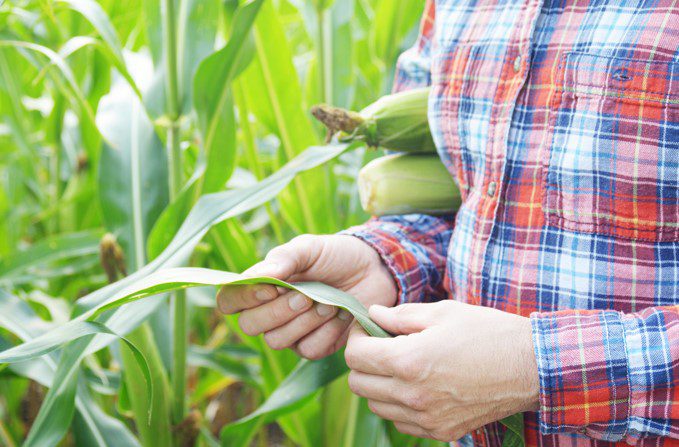Corn Tillers Definition
Corn is as American as apple pie. This year we’re growing our corn in containers, and of late, I’ve noticed some sucker on the corn stalks.
After completing a little research, I found they refer to these as corn plant tillers. What are corn tillers, and should you be removing the suckers from corn? What are Corn Tillers?
Corn tillers are sometimes called suckers because of the old wives’ tale that they “suck” nutrients from the plant. The problem is, “Is it true that suckers on corn stalks will adversely affect yield?”
Tillers on corn are vegetative or reproductive shoots that grow from the axillary buds on the lower five to seven stalk nodes of a corn plant. You will commonly find them on corn.
Corn Stalks And Tillers
They are identical to the main stalk and can even form their own root system, nodes, leaves, ears, and tassels. If you find similar buds at nodes higher up on the main stalk, they are undoubtedly not corn plant tillers.
They are called ear shoots and differ from tillers with shorter ears and leaves, and the stalk ends in an ear rather than a tassel.
Tillers on corn stalks are commonly a sign that the corn is growing in favorable conditions. However, tillers sometimes develop after an injury to the main stalk early in the growing season.
Hail, frost, insects, wind, or damage caused by tractors, humans, or deer may result in tillers’ formation. Usually, the tillers don’t have enough time to develop into mature ears before the weather turns and frost kills them. Sometimes, however, they will make it to maturity and harvest an extra little bounty of corn.
With favorable conditions — ample light, water, and nutrients, tillers form because the corn stalks have surplus energy to foster tiller development. Tillers usually form later in the growing season and don’t usually become ears of corn, keyword — usually.
Usually, they are “forced” out by the competitive maturing ears because they are so late. Sometimes though, if conditions are just right, you may end up with a bonus ear of corn.
Are Suckers on Corn Stalks Adverse?
As the com grows, use a rototiller or hoe to control weeds while hilling up soil around the base of the plants. Never remove the side branches, called tillers. Some varieties actually produce ears on the tillers, and tillers are often an important pollen source.
Hybrid com usually sheds pollen all at once, but OP varieties that form tillers have a longer pollination period involving the primary tassel and tassels growing from tiller tips.
A study at the University of Illinois confirmed this is not the case. There is a tiny movement of nutrients between the main stem and the tiller before tasseling. After that, sugars may move from the barren tiller to the cob-bearing stem.
If both the main stem and the tiller have a cob, each stem will feed its cob independently.
Tillers may come in handy this year if the weather continues to be dry. The main plant may then be able to cannibalize the second stalk for nutrients.
Tillers may be found in areas where growing conditions are excellent or in parts of the field where stands are thin. Certain hybrids may also be more prone to tillering than others.
The only time tillers may cause concern is if the plant puts out two or more. That could indicate an inadequate stand, suggesting the need to correct plant population or spacing problems before next year.
Should you be removing suckers from corn plants?
Apparently, there is no reason to remove them. They aren’t harming the plant, and natural selection may do the work for you.
Also, if you try to prune them, you risk causing damage to the main stalk, which can open it to insects or diseases. It is smart to be safe than sorry and leave the corn tillers alone.























